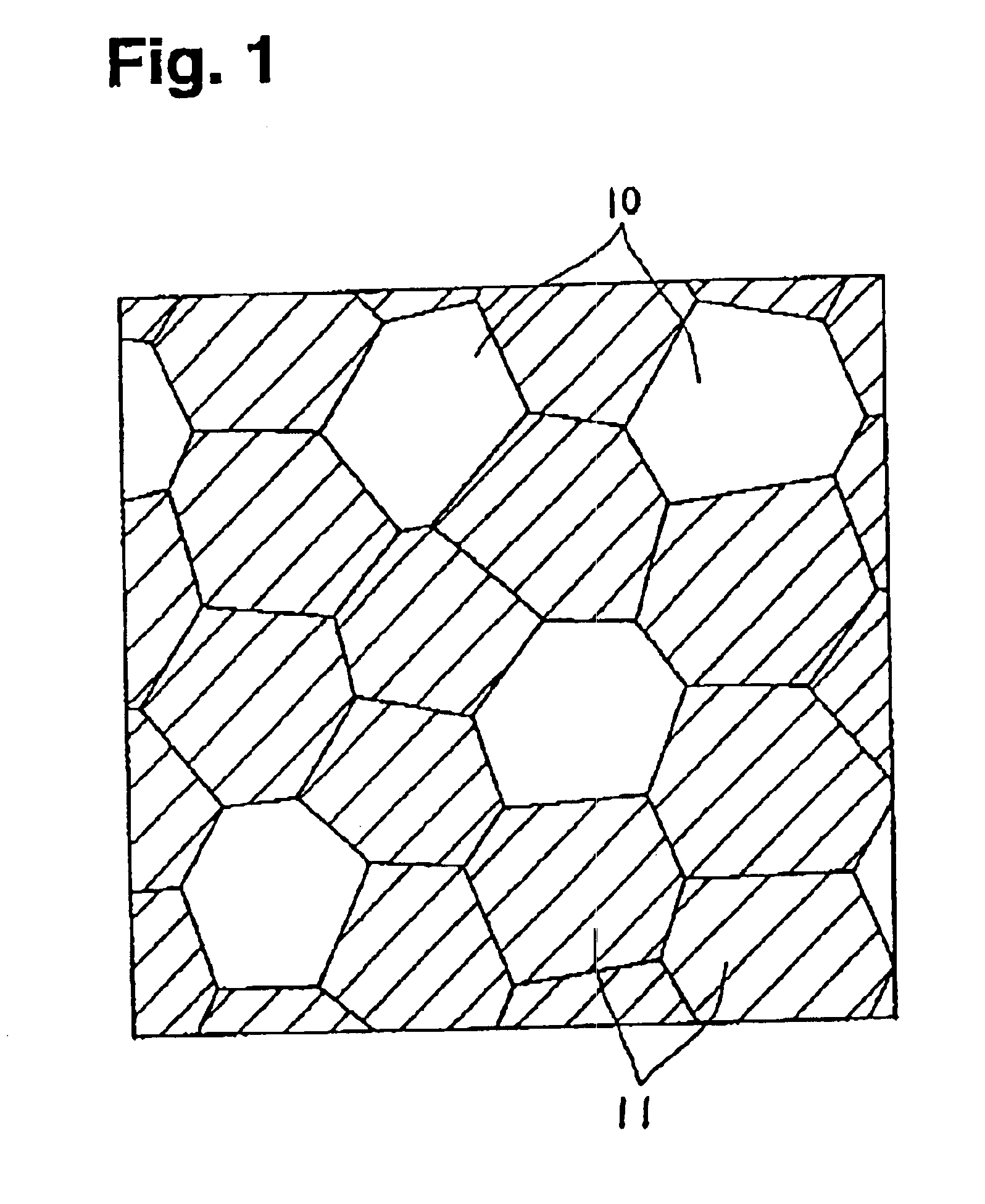Magnetic powder and isotropic bonded magnet
a bonded magnet and magnetic powder technology, applied in the field of magnetic powder and isotropic bonded magnets, can solve the problems of low magnetic performance, insufficient magnetic flux density of conventional isotropic bonded magnets, and inability to achieve desired magnetic flux density, etc., to achieve excellent magnetic characteristics, large coercive force, and high magnetic characteristics
- Summary
- Abstract
- Description
- Claims
- Application Information
AI Technical Summary
Benefits of technology
Problems solved by technology
Method used
Image
Examples
example 1
Magnetic powders with alloy compositions Nd8.7Fe77.2-wCo8.5B5.6Siw (that is, various types of magnetic powders in which the content w of Si is changed variously) were obtained by the method described below.
First, each of the materials Nd, Fe, Co, B, and Si was weighed to cast a mother alloy ingot, and a sample of about 15 g was cut out from the ingot.
A quenched ribbon manufacturing apparatus 1 as shown in FIG. 4 and FIG. 5 was prepared, and the sample was placed in a quartz tube 2 having a nozzle (circular orifice) 3 at the bottom. After evacuating the interior of a chamber in which the quenched ribbon manufacturing apparatus 1 is housed, an inert gas (Ar gas and helium gas) was introduced to obtain an atmosphere with desired temperature and pressure.
Then, the ingot sample in the quartz tube 2 was melted by high frequency induction heating, the circumferential velocity and the jetting pressure (difference between the inner pressure of the quartz tube 2 and the pressure of the atmosp...
example 2
Quenched ribbons of which alloy compositions were (Nd1-yPry)8.7FebalCo7.5B5.6Si1.4 (that is, various types of quenched ribbons in which the substitution amount y of Pr is changed variously) were manufactured in the same manner as Example 1, and then the manufactured quenched ribbons were subjected to heat treatment in the argon gas atmosphere at a temperature of 680° C. for 10 minutes. Using the same analyzing method as that used in Example 1, it has been confirmed that the structure of each of the quenched ribbons constitutes a nanocomposite structure.
Next, in the same manner as Example 1, magnetic powders were obtained from the respective quenched ribbons, and then cylindrical (ring-shaped) isotropic bonded magnets having outer diameter of 20 mm, inner diameter of 18 mm and height of 7 mm were manufactured. The content of the magnetic powder in each of the bonded magnets was about 96.8 wt %. Further, the density of each of the bonded magnets was about 6.18 g / cm3.
For these magnetic...
example 3
Quenched ribbons of which alloy compositions were ((Nd0.5Pr0.5)zDY1-z)9.0FebalCo7.7B5.7Si18 (that is, various types of quenched ribbons in which the substitution amount (1-z) of Dy is changed variously) were manufactured in the same manner as Example 1, and then the manufactured quenched ribbons were subjected to heat treatment in the argon gas atmosphere at a temperature of 680° C. for 12 minutes. Using the same analyzing method as that used in Example 1, it has been confirmed that the structure of each of the quenched ribbons constitutes a nanocomposite structure.
Next, in the same manner as Example 1, magnetic powders were obtained from the respective quenched ribbons, and then cylindrical (ring-shaped) isotropic bonded magnets having outer diameter of 20 mm, inner diameter of 18 mm and height of 7 mm were manufactured. The content of the magnetic powder in each of the bonded magnets was about 96.8 wt %. Further, the density of each of the bonded magnets was about 6.20 g / cm3.
For t...
PUM
| Property | Measurement | Unit |
|---|---|---|
| grain size | aaaaa | aaaaa |
| grain diameter | aaaaa | aaaaa |
| grain diameter size | aaaaa | aaaaa |
Abstract
Description
Claims
Application Information
 Login to View More
Login to View More - R&D
- Intellectual Property
- Life Sciences
- Materials
- Tech Scout
- Unparalleled Data Quality
- Higher Quality Content
- 60% Fewer Hallucinations
Browse by: Latest US Patents, China's latest patents, Technical Efficacy Thesaurus, Application Domain, Technology Topic, Popular Technical Reports.
© 2025 PatSnap. All rights reserved.Legal|Privacy policy|Modern Slavery Act Transparency Statement|Sitemap|About US| Contact US: help@patsnap.com



